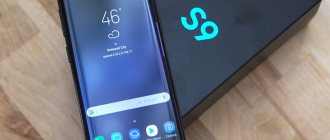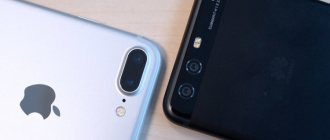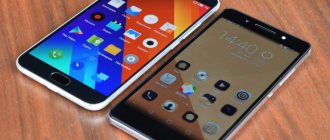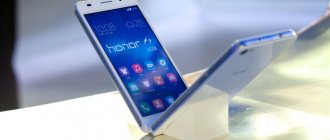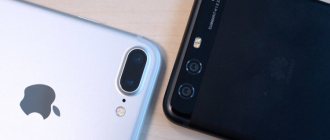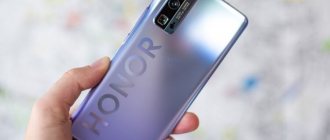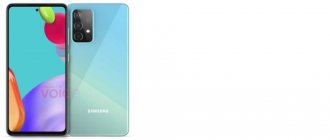Parameters in the table
For ease of comparison of characteristics, it is appropriate to use the table:
| iPhone X | Huawei P20 Pro | |
| Frame | Glass front and back, steel frame | Identically |
| Display |
|
|
| CPU | Apple A11 Bionic (10 nm) + Apple GPU | Hisilicon Kirin 970 (10 nm) + Mali-G72 MP12 |
| Memory | 64 or 256 GB disk + 3 GB RAM | 128 or 256 GB disk + 6 or 8 GB RAM |
| Rear camera |
|
|
| Frontal | 7 MP, f/2.2, focal length 32 mm | 24 MP, f/2, 26 mm |
| Battery | 2716 mAh, fast charging – 50% in 30 minutes | 4000 mAh, fast charging – 58% in 30 minutes |
| Connection | Bluetooth 5.0, Wi-Fi 5 GHz, NFC and Apple Pay | Bluetooth 5.0, Wi-Fi 5 GHz, NFC and Google Pay |
| Peculiarities |
| Waterproof IP67 (1 meter underwater for 30 minutes) |
The differences between smartphones are obvious.
Design and build
It is difficult to talk about the design of purely utilitarian and, by and large, identical devices. There are no global differences between a top-end iPhone and some worker-peasant Doogee without obsessive-compulsive disorder. However, there is still some difference between the contestants.
The first thing that catches your eye is the huge cutout at the top of the iPhone Xs Max display. Apple was the first to use this design technique and, it seems, will be the last to abandon it. The P30 Pro has a much more modest cutout - only the camera is hidden behind the “droplet”. But Samsung distinguished itself: here the cutout with a double front camera is located not in the center of the screen, but in the right corner. Some people may like this, but for me it’s a natural eyesore, which is not comfortable to play with or watch movies with.
Apart from the cutouts and the location of the main cameras, the devices are similar like twins: glass backs, tempered glass, metal frames, protection against water and dust according to IP68 class, almost the same dimensions... However, only the Samsung device has a mini-jack, which is the case now fashion.
It’s difficult to choose a winner, but Huawei’s gradient color looks really good. Sorry, S10+.
Winner : Huawei P30 Pro
iPhone X display
And although the screens of the phones are similar, they are still different. “X” is the first phone with an Amoled matrix. Its diagonal is 5.8 inches, resolution is 1125x2436 inches, HDR is supported, and the pixel density is 458 ppi. Plus, the display received TrueTone technology - automatic adjustment of white balance depending on external lighting, which was made possible thanks to a 6-channel light sensor. This makes the picture on the screen pleasant to view in a dark room or in bright sunlight.
Apple also promised the highest brightness of 625 nits and a contrast ratio of 1,000,000:1. It is worth admitting that the promise was kept. Specialists at GSMArena measured the brightness of white color at a backlight level of 100%, the result was 679 cd/m2, which is higher than promised. At the same time, the brightness of black is 0 cd/m2, that is, the black dots do not glow at all, which gives maximum black depth and almost infinite contrast. Yes, the display in the iPhone X is very cool, but this is hardly the merit of the American brand, because the matrices were ordered from the Koreans from Samsung.
Please note that the Samsung Galaxy S8 (at the time of the release of the iPhone X it was the TOP device from Samsung) uses a matrix with a backlight brightness of 440 nits, which makes the Amoled screen of the X the brightest among all Amoleds. A logical question: why don’t the Koreans increase the brightness in their flagships? This may be due to matrix burnout, which is possible when a certain brightness threshold is increased.
Until recently, Amoled screens actually burned out, then they stopped - Samsung learned to increase the brightness to 440 nits without harming the displays. It looks like Apple unwisely increased the brightness to 679 nits in pursuit of glory, and now their displays can burn out - this is evidenced by Apple's warning on the official website. If you have an iPhone X, I recommend not increasing the display brightness above 70%, otherwise there may be a loss of contrast.
Connection
The devices are close in quality of communication and wireless interfaces, but not identical.
In terms of communication quality, the iPhone Xs Max traditionally for Apple does not reach the flagship level: there is Bluetooth 5.0 and LTE with speeds of up to gigabit per second, but there is only one SIM card (I do not consider the option of buying a Chinese dual-SIM card or using e-Sim), support There is no Wi-Fi 802.11ax, there is no dual-channel GPS, the signal sometimes disappears... It’s sad, in general.
But Huawei, on the contrary, has excellent network reception, holds two SIM cards, and has on board not only LTE, Bluetooth 5.0 and Wi-Fi 802.11ac, but also an infrared port. I don’t know why it is needed in 2021, but practice shows that there are no unnecessary interfaces.
Finally, the Samsung gadget is also equipped with a combined SIM card slot and all possible interfaces. In addition, it is the only one of all that is familiar with Wi-Fi 6 (ax) and supports LTE category 20 with data transfer rates of up to 2 gigabits per second. You won’t find a faster phone today, except perhaps the Samsung Galaxy 10 5G, which is useful only in South Korea, and even then not all of it.
Winner : Samsung Galaxy S10+
Display Huawei P20 Pro
The flagship of the Chinese brand is also equipped with an Amoled display, 6.1 inches, 2240×1080; pixel density – classic 408 ppi. Screen testing results by GSMArena studio:
- The maximum white brightness at 100% backlight is 412 cd/m2.
- Max. black brightness at 100% backlight – 0 cd/m2.
Given that the black dots do not glow, we also get maximum depth and virtually infinite contrast. However, these parameters are valid for manual backlight control mode. When set to Auto mode, the maximum display brightness increases and reaches 582 nits for white and 0 nits for black.
In any case, the P20 Pro's display brightness is lower than that of the iPhone X, although the contrast is at the same level. There is no clear winner, since in Auto mode the Huawei display also perfectly displays content in direct sunlight, plus the reduced backlight brightness is for the better, since the risk of matrix burnout is eliminated.
Display
If we compare Honor 8 and iPhone 6 in terms of display characteristics, we can conclude that Apple is slightly inferior in comparison. But you need to consider everything in detail to make the right choice.
For a more convenient comparison of two devices, the list shows two indicators for each item.
- iPhone 6 screen type - LED-backlit. Screen type Honor 8 - IPS LCD;
- The number of inches the “Apple” has is slightly less than that of the competing device – 4.7 inches. Honor has an indicator of 5.2 inches;
- The screen resolution of the iOS system is also slightly inferior to its competitor - 750 x 1334 pixels. For Honor, these numbers have a value of 1080 x 1920 pixels;
- The iPhone 6 also loses to its opponent in terms of screen density – 326 pixels, while the competitor’s density is 423 pixels;
- The number of colors is 16777216 for both phone devices;
- The last characteristic on this list is the presence of multi-touch, that is, the ability of the screen to accept simultaneous touches from several fingers. iPhone doesn't have this. But Honor 8 can boast of this.
As you can see, the Chinese brand was able to “outdo” the iPhone in many aspects.
Batteries and autonomy
Apple smartphones have never been equipped with capacious batteries, but they were successful due to their software and optimization of energy consumption. iPhone X is no exception - the device received a 2716 mAh battery. The same battery is installed in the iPhone 8 Plus.
The kit includes a 5V/1A adapter, which is not capable of charging quickly - from zero to 20% in 30 minutes. The result is not impressive and even disappointing, but the smartphone can be charged faster. So that it works via USB Type-C. To do this, you will need a USB Type-C to Lightning adapter and an adapter from a MacBook or even a Google Pixel 2. Using a fast charging adapter guarantees increased speed - in 30 minutes the phone will charge from zero to 45%, although this is not the fastest charging, considering the that 45% in iPhone X is only 1222 mAh.
Testing of the smartphone by the GSMArena studio showed that the iPhone X on a full charge will provide (the backlight brightness is set to 200 nits, which is equal to 30%):
- 19 hours of calls on a 3G network;
- 9.26 hours of surfing the Internet;
- 12 hours of video playback.
Standard result for smartphones 2017-2019. Considering the battery capacity of 2716 mAh, autonomy is impressive.
Huawei P20 Pro is equipped with a 4000 mAh battery, which is rare in TOP models. When testing autonomy, the following results were obtained:
- 20:56 hours of communication on a 3G network;
- 14:30 surfing the Internet;
- 13:14 hours of video playback.
The display brightness is set to 200 nits – 48.5% of the total backlight brightness. Unlike the iPhone X, the Huawei P20 Pro comes out of the box with a fast charging adapter - with it, the phone charges from 0 to 58% in half an hour, a full cycle lasts 90 minutes. Considering the battery capacity of 4000 mAh, the results are excellent.
Equipment
Our comparison of Honor 8 and iPhone 6 will begin with one of the most important points - the configuration of the devices.
This time, the creators of iPhone 6 took care of their customers and equipped the device with a full set of essential accessories. This list included:
- Original headset in the form of Earpods headphones;
- Cable for connecting the device via a USB port;
- A small paper clip so that users can easily remove the SIM slot;
- The instructions for work, although not entirely complete, are better than nothing at all;
- Standard charging unit;
- And, as always, the manufacturers included several branded stickers with the apple logo in the box.
There is nothing particularly noteworthy on this list. Most people know that this is exactly what a standard set should look like when purchased.
As for Honor 8, the equipment here is a little sparse than expected:
- The most common cable and charger unit;
- Very short instructions.
Here the creators worked in a minimalist style and included only the most important things in the kit.
Performance and processors
The devices use the most powerful chipsets at the time of flagship release. Let's start with Apple - the iPhone X received an Apple A11 Bionic processor with 6 cores and the first video accelerator, which was developed directly by Apple (PowerVR graphics units were previously used). Also, the phone only has 3GB of RAM.
The new A11 Bionic chip uses two powerful Monsoon cores with a frequency of 2.4 GHz, which are 25% more powerful than the previous Hurricane blocks in the Apple A10 Fusion. The chipset also features energy-efficient 2.34 GHz Mistral cores – they are 75% faster than previous low-performance Zephyr units and at the same time have lower power consumption. Plus, the processor uses a 2-core dedicated unit responsible for machine learning, thanks to which the phone performs routine tasks faster.
Testing the iPhone X in popular benchmarks showed the following results.
GeekBench 4.1 (single-core mode)
GeekBench 4.1 (multi-core)
Let's remember the test results: 4256 points in single-core mode; 10215 points – in multi-core. These are amazing results that speak of Apple's success in creating its own graphics video accelerators.
Overall performance is displayed in the Antutu 7 benchmark. The results are obtained from the official Antutu website:
Clearly, the iPhone X is a powerful flagship that remains extremely energy efficient.
Huawei P20 Pro is equipped with SoC Kirin 970, made using 10nm technology. It consists of 8 cores: 4xCortex-A73 2.4 GHz, 4xCortex-A53 1.8 GHz + Mali-G72 MP12. The RAM here is 2 times larger - 6 GB. I’ll add that HiSilicon processors have a weak point - the Mali graphics core, which drags down the fairly technologically advanced Kirin 970. Because of it, the overall speed when working with graphics drops, as evidenced by the test results.
GeekBench 4.1 (single-core mode)
GeekBench 4.1 (multi-core)
Antutu 7
What we see as a result: in Single-Core mode in the GeekBench benchmark, the Kirin 970 is more than 2 times inferior to the Apple A10 Fusion. The lag is reduced in multi-core mode, although there is still a gap between the chipsets. And all because of the Mali video accelerator.
The overall performance displayed in Antutu 7 is strong, but in any case, the winner is the Apple iPhone X.
Hardware and performance
Comparing the performance of smartphones on different operating systems is a fool’s errand, especially since each device is available in several variants. But some conclusions can still be drawn. And they are clearly not in favor of Samsung and Huawei.
The weakest performer in the tests was the P30 Pro, inside of which beats the proprietary heart of the Huawei Kirin 980. In principle, this is a quite decent, energy-efficient and productive processor built on a 7 mm process technology, but its graphics subsystem copes very poorly with 3D games. Today it will run everything without any questions, but is inferior to its Exynos and Qualcomm Snapdragon counterparts. The Galaxy S10+, the European version of which is based on Samsung's own Exynos 9820 Octa processor, also performs surprisingly poorly at any resource-intensive tasks, remaining far behind the iPhone with its fashionable Apple A12 Bionic in terms of performance. Android flagships will not be saved by either the enormous amount of RAM (for the top version S10+ it reaches 12 gigabytes versus 4 gigabytes for the iPhone) or optimization of the operating system.
The times when iOS was clearly and in every way better than Android are long gone. Google's operating system, especially with the proprietary EMUI 9.1 and One UI shells, looks good and works quickly. Its main advantage is the lack of intrusive integration with Apple services. In general, I personally like Android much more. In all other respects, the victory is for the iPhone.
Winner : Apple iPhone Xs Max
Cameras
To compare smartphone cameras, materials from the DxOMark website are used. The characteristics of the cameras are indicated in the table above, so there is no point in repeating them. Below are photographs taken under equal lighting conditions, which allows you to compare the quality and capabilities of the phones.
Clickable - pictures open in full resolution:
Huawei P20 Pro
iPhone X
Crops:
Huawei P20 Pro
iPhone X
Crops:
Photo on Huawei P20 Pro. Notice the window at the back without any light.
photo on iPhone X. Demonstration of poor capture of objects from a light source (window)
Crops:
Huawei P20 Pro
iPhone X
There can be no two opinions - the Huawei P20 Pro camera is much better - it demonstrates high detail even in low light, accurate white balance, captures details in dark and light areas of the scene, which indicates a wide dynamic range. I’d especially like to highlight shooting with a blurred background – the P20 Pro provides precise blur, unlike the iPhone X.
Design
The first thing the target client sees when purchasing is the appearance of the gadget. Most often, it is by appearance that the initial impression is formed and a person decides whether he should spend time learning more about the characteristics of the device or go further. Since there are a huge number of shelves with similar phones in stores, we look for the most attractive design, and then proceed to study it in more detail. The task of the developers is to develop the most attractive design to hook the buyer.
This time, Apple employees worked hard on the appearance of the iPhone 6. It differs from its relatives in its very streamlined shape. Although, if we take into account the very first iPhone model, it turns out that the company’s design concept was preserved. It is based on a standard rectangle, the edges of which are neatly rounded. The sixth Apple model retains a small round button under the screen. Again, if we take the entire history of smartphone releases, then mainly only the size has changed. The developers always left the appearance recognizable.
In general, you can’t find fault with the design of the iPhone 6. The gadget is made entirely in the corporate style and remains easily recognizable on store shelves.
Now about Honor 8. You can say it without concealment - it went anywhere. Huawei engineers were able to find the optimal combination of width, thickness, weight and shape of the device, so that it seems more compact in the hand than it actually is. Of course, there is some similarity with the iPhone - the same frames on the front panel, but there are no mechanical buttons. To create the case, special glass was used, and metal inserts were made on the sides. The front panel has a very good external coating, which allows you to protect your new device from scratches. Unfortunately, the same cannot be said about the back side. If you carry the gadget in your pocket without a case, the first scratches will not be long in coming.
